This post may contain paid links. See more info on my privacy page.
Rich and flavorful, Espagnole Sauce is a versatile sauce you can use to drizzle over beef, chicken, or pork, as a gravy for mashed potatoes, a base for soups and stews, and more! My recipe for espagnole sauce cooks low-and-slow for a flavor you'll want to come back to again and again. Bookmark this page - trust me!
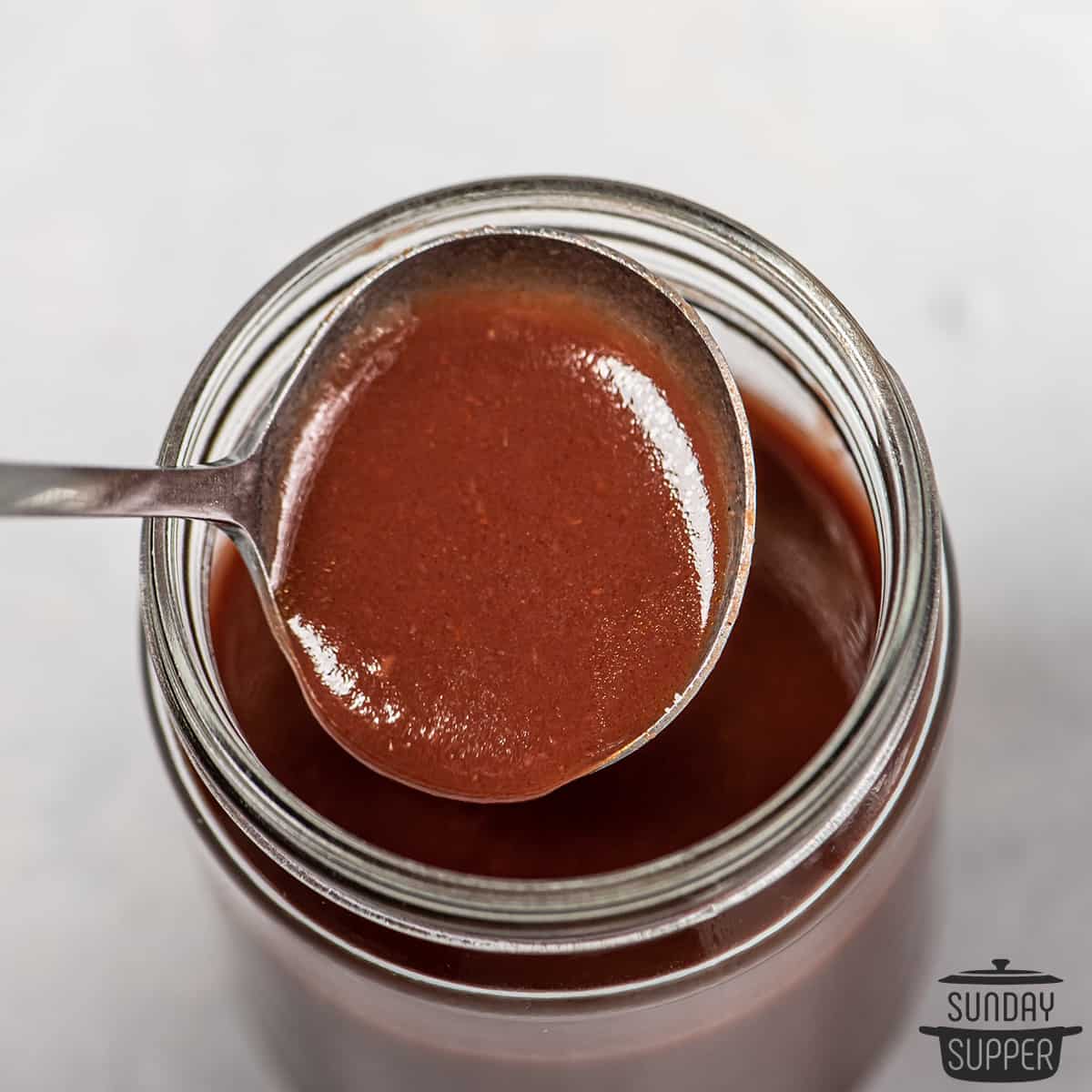
Jump to:
Espagnole Sauce Recipe
After years of feeling intimidated by the idea of cooking the perfect Beef Wellington, I finally did it: it was juicy on the inside, with crisp puff pastry and incredible flavor. What brought those flavors together, though, was the espagnole sauce recipe I served it with - the very same one I'm sharing with you here!
This gorgeous, velvety brown sauce is best known as one of the French mother sauces. It's the sort of versatile sauce you can use all on its own or as a base for other sauces, like demi-glace.
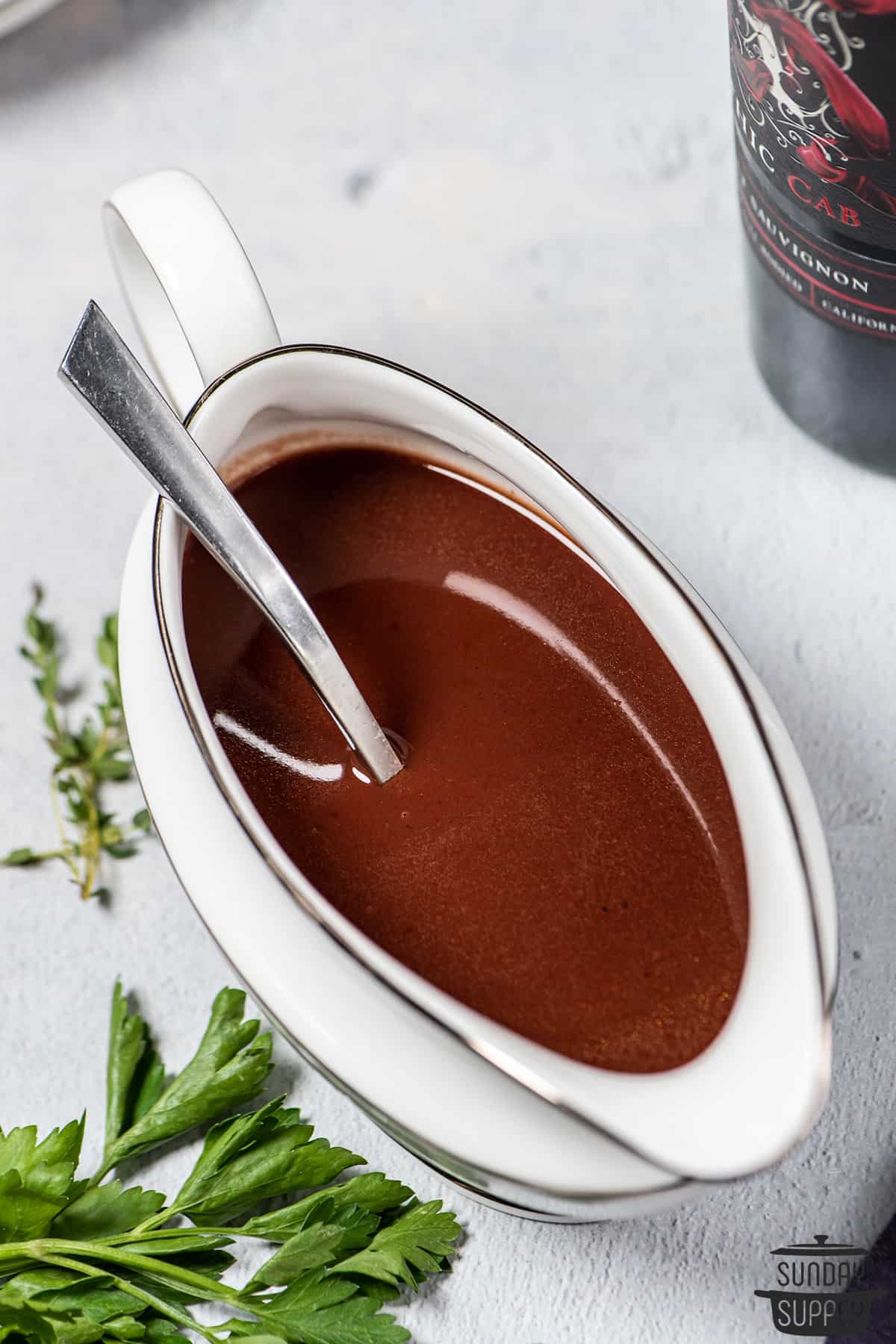
Espagnole Sauce Ingredients
- Unsalted butter: I highly recommend unsalted butter instead of salted butter, as it allows you to carefully control the saltiness of the sauce.
- All-purpose flour: You can easily make gluten free espagnole sauce by swapping the flour out for a gluten free blend. It will thicken just as well!
- Onion: I use yellow onions, as they're nice and sweet.
- Carrot: Carrots bring in a natural sweetness without the need to add extra sugar.
- Celery: The unique flavor of celery rounds out the mirepoix for the perfect flavor-boosting combination!
- Garlic: You'll want to use fresh garlic to capture the full flavor.
- Beef stock: While you can use beef broth, I highly recommend stock, which has a thicker texture and a whole lot more flavor. The collagen and protein in the stock will help the sauce thicken and stay silky.
- Red wine: Use a robust, fruity wine like Pinot Noir, Merlot, or Cabernet Sauvignon. Don't skip out on the wine; it adds so much depth and dimension to the sauce!
- Tomato paste: Intensely flavorful and sweet, tomato paste will sweeten alongside the mirepoix vegetables.
- Bay leaves: Bay adds a unique sort of herbal floral flavor to the sauce. Use whole leaves, not ground bay leaves.
- Fresh thyme: Fresh thyme has an incredible flavor that tastes so much better than dried. Pop in the whole sprig; you'll remove it later, so the stem can stay on.
- Salt: Be sparing with the salt, and make sure to taste the sauce often. Broth and stock are very salty already!
- Pepper: A few pinches of black pepper adds a layer of subtle heat.
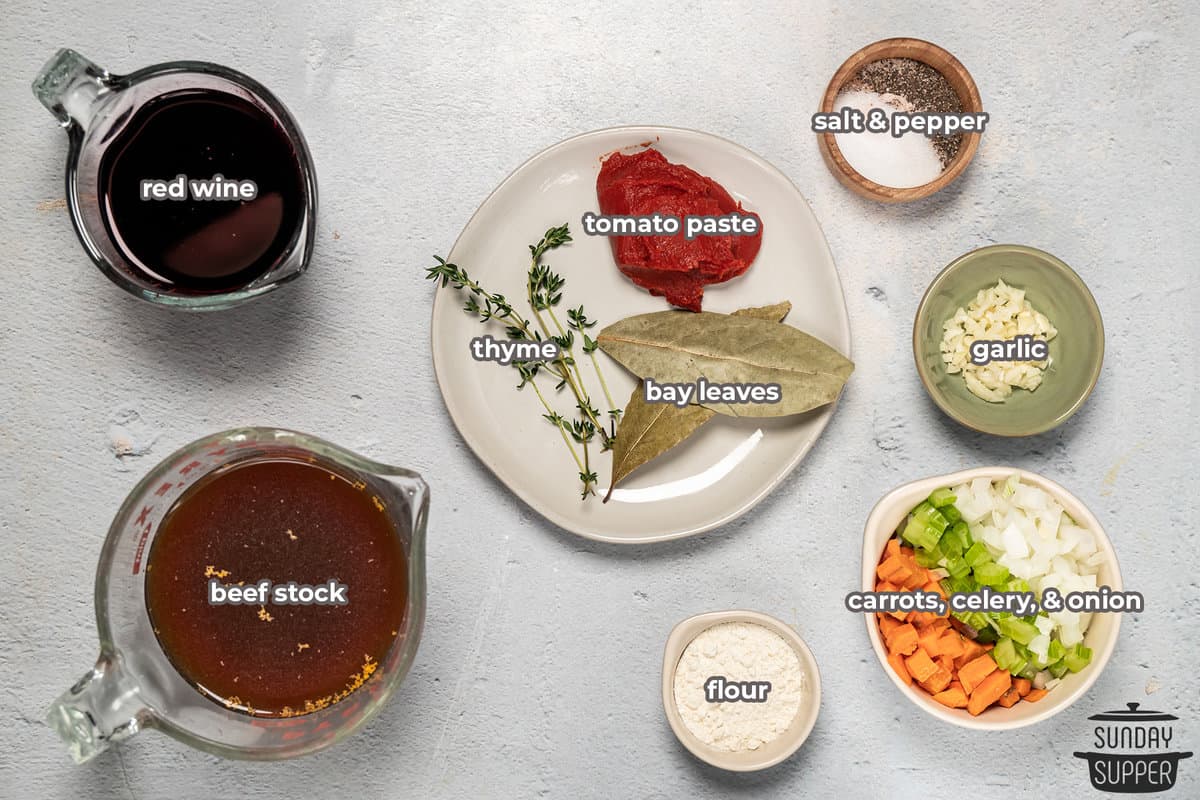
How to Make Espagnole Sauce
- Chop onion, carrot, celery, and garlic finely. Melt butter in a saucepan over medium-low heat, then add the chopped vegetables. Saute in butter until soft and very lightly browned, approximately 5 minutes.
- Sprinkle flour over the vegetables and stir well until it forms a roux (thick paste-like consistency). Continue cooking the roux until it turns a golden-brown color - don't let it get too dark!
- Slowly pour in red wine while stirring continuously. Scrape up the browned bits from the bottom of your pan with a wooden spoon, and let the wine simmer for a few minutes. It should start thickening in the pot.
- Add beef stock, tomato paste, bay leaf, and thyme, and stir to combine.
- Bring to a simmer, then reduce to low. Let it simmer gently for about 1 hour, stirring now and then. Make sure to check on it to ensure it doesn't start boiling and reduce too much.
- After cooking, remove the bay leaves and thyme, then pour the sauce through a fine-mesh strainer over a mixing bowl. Press down on the vegetables to extract as much liquid as possible; that's where all the flavor is.
- Rinse the saucepan, then return the espagnole sauce to the pan. Season with salt and pepper to taste, and simmer an additional 5 minutes before serving! Enjoy!
Espagnole Sauce Recipes Tips
- Make sure not to overcook the roux. It should be a light golden brown color, not too browned. It should also not be too pale.
- Beef stock and veal stock both work as brown stock for this recipe. Broth may work for flavor, but it won't create a sauce as rich or thick, so I recommend using stock.
- You can swap out the celery for fennel stalks and add a bit of rosemary if you like - other vegetables also work as a base for brown sauce, such as leeks instead of onions.
- Let the sauce simmer for a full hour. I know it seems like a long time for a sauce - but you won't believe the flavor you get out of it! It creates a silky smooth, incredibly rich espagnole.
- Keep stirring when you add the red wine to avoid lumps.
- Make sure not to bring the sauce to a boil. You want it to simmer, not boil gently. If it does boil, you will need to add more stock to ensure it doesn't thicken too much.
- You can use a cheesecloth instead of a fine mesh strainer if it's what you have to work with. Don't use a pasta strainer; you want a nice fine mesh to ensure the sauce remains silky.
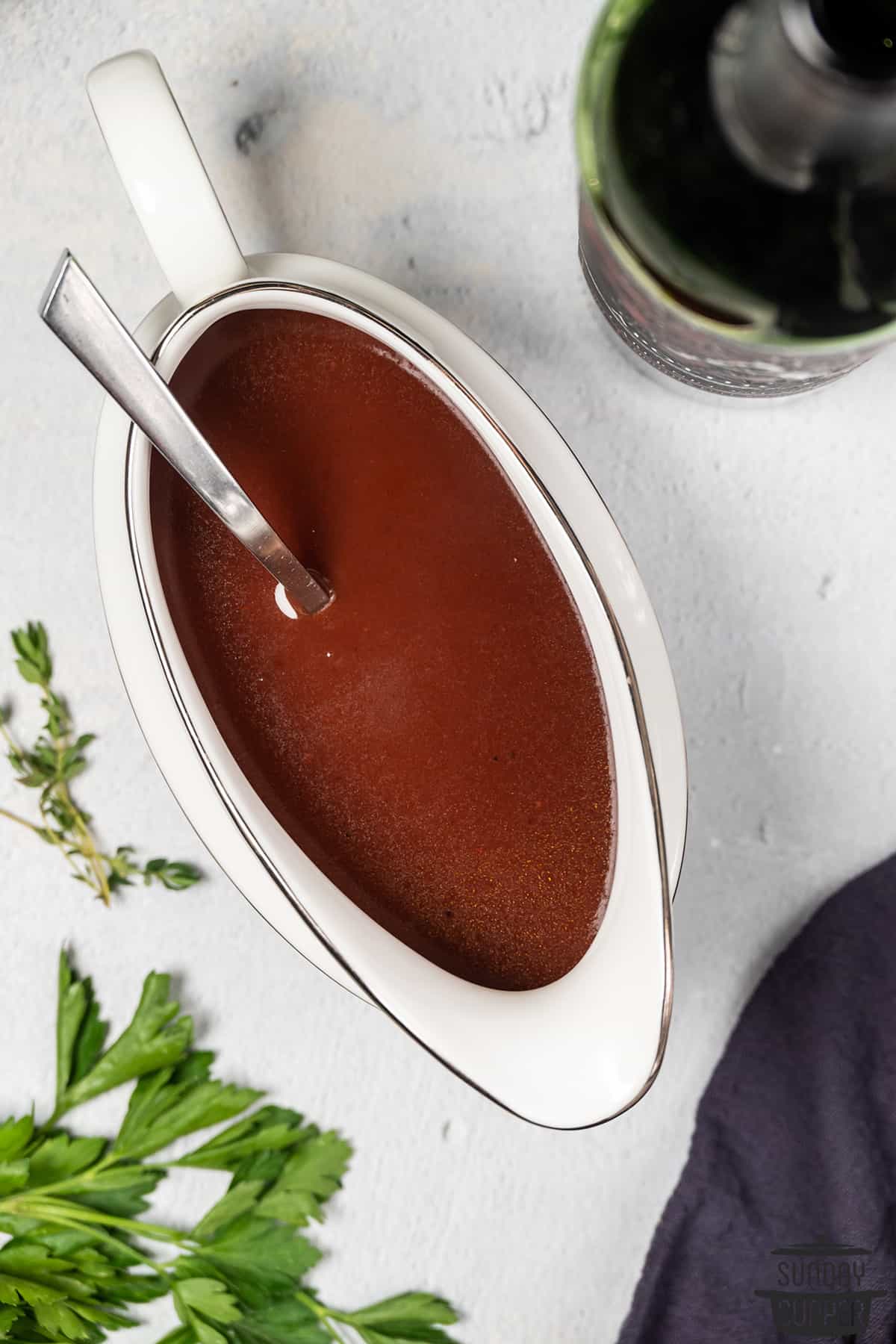
Storage and Reheating
- Refrigerator: Espagnole can be stored in the fridge for up to 5 days. It will separate a bit as it sits, but a quick stir will combine it again.
- Freezer: Because of the lack of dairy, espagnole is fantastic for freezing. I recommend freezing it in small freezer safe airtight containers so you can thaw a meal's worth at a time.
- Thawing: You can thaw espagnole either in the fridge overnight, or by placing the frozen sauce in a pan over low heat and covering it with a lid. Stir fairly frequently to ensure it doesn't burn as it thaws.
- Reheating: Espagnole reheats well in the microwave, or in a pan stirred over medium low heat.
Espagnole Sauce Recipes FAQ
Espagnole sauce has many derivative sauces, including the classic French sauce demi-glace, chasseur, and bordelaise sauce.
With its base of tomato paste and beef or veal stock, Espagnole has a rich, beefy flavor complemented by tomato. It is hearty and flavorful, making it a great pairing for red meats and chicken, pork, vegetables, and more.
Yes! While it's often turned into a derivative sauce, espagnole on its own is already delightfully flavorful and perfect for serving as a sauce for steak or beef.
Recipes with Espagnole Sauce
- Beef Wellington: The most classic pairing with espagnole! This gorgeous steak dinner is a show-stopper for any holiday table or special occasion.
- Beef Stew: You can use espagnole sauce as a basis for any beef stew.
- Mashed Potato Gravy: Try pouring espagnole over Creamy Mashed Potatoes.
- Sauce for Prime Rib: I love this sauce with my family's favorite Slow Roasted Prime Rib.
Easy Sauce Recipes
- Bechamel (another mother sauce!)
- Easy Béarnaise Sauce
- Red Wine Reduction
- Alfredo Sauce
- Garlic Butter Sauce
If you enjoyed the recipe, leave a comment and a rating below!
Sauce Espagnole
I love this espagnole sauce recipe just as it is for everything from gravy for a full rib roast, to a base for my favorite beef stew - and more than beef! Try serving it with chicken, pork, turkey, and vegetables. It makes the most fantastic sauce with mushrooms! Let me know your favorite way to serve espagnole sauce in the comments below and with a rating.
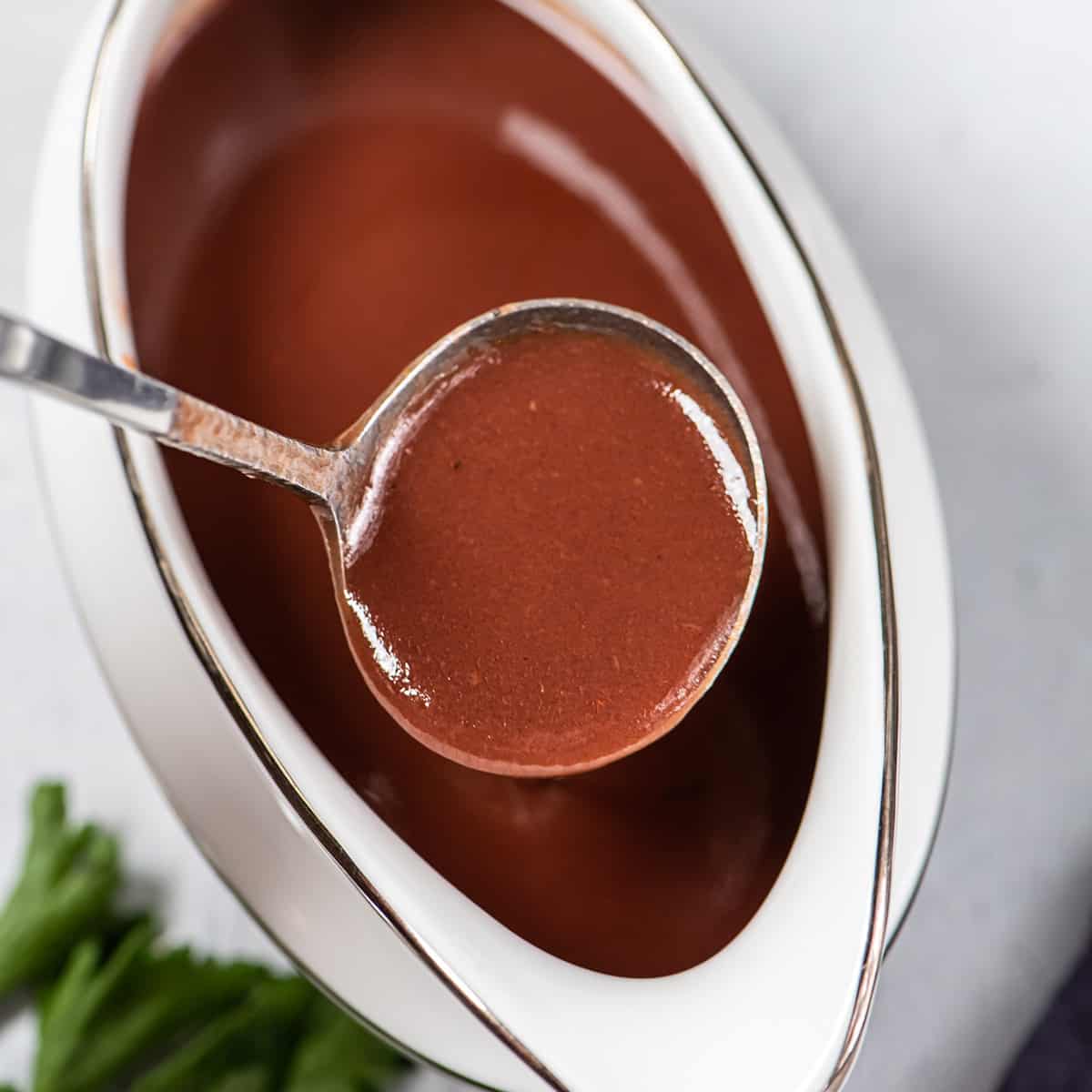
Espagnole Sauce Recipe
Ingredients
- 2 Tablespoons Unsalted butter
- 2 Tablespoons Flour
- ¼ Onion finely chopped
- ½ Carrot finely chopped
- 1 stalk Celery finely chopped
- 2 cloves Garlic minced
- 2 cups Beef stock
- 1 cup Red wine
- 2 Tablespoons Tomato paste
- 2 Bay leaves
- 3 sprigs Fresh thyme
- Salt and pepper to taste
Instructions
- Chop onion, carrot, celery, and garlic finely. Melt butter in a saucepan over medium heat, then add the chopped vegetables. Saute in butter until soft and lightly browned, approximately 5 minutes.
- Sprinkle flour over the vegetables and stir well until it forms a roux (thick paste-like consistency). Continue cooking the roux until it turns a golden-brown color - don't let it get too dark!
- Slowly pour in red wine while stirring continuously. Scrape up the browned bits from the bottom of your pan with a wooden spoon, and let the wine simmer for a few minutes.
- Add beef stock, tomato paste, bay leaf, and thyme, and stir to combine.
- Bring to a simmer, then reduce to low. Let it simmer gently for about 1 hour, stirring now and then.
- After cooking, remove the bay leaves and thyme, then pour the sauce through a fine-mesh strainer over a mixing bowl. Press down on the vegetables to extract as much of the liquid as possible.
- Rinse the saucepan, then return the espagnole sauce to the pan. Season with salt and pepper to taste, and simmer an additional 5 minutes before serving! Enjoy!
Notes
- Make sure not to overcook the roux. It should be a light golden brown color, not too browned. It should also not be too pale.
- Beef stock and veal stock both work as brown stock for this recipe. Broth may work for flavor, but it won't create as rich or thick of a sauce, so I recommend using stock.
- You can swap out the celery for fennel stocks and even add a bit of rosemary if you like - other vegetables work as a base for brown sauce, too.
- Let the sauce simmer for the full hour. I know it seems like a long time for a sauce - but you won't believe the flavor you get out of it! It creates a silky smooth, incredibly rich espagnole.
- Keep stirring when you add the red wine to avoid lumps.
- Make sure not to bring the sauce to a boil. You want it to gently simmer, not boil.
- You can use a cheesecloth instead of a fine mesh strainer, if it's what you have to work with.



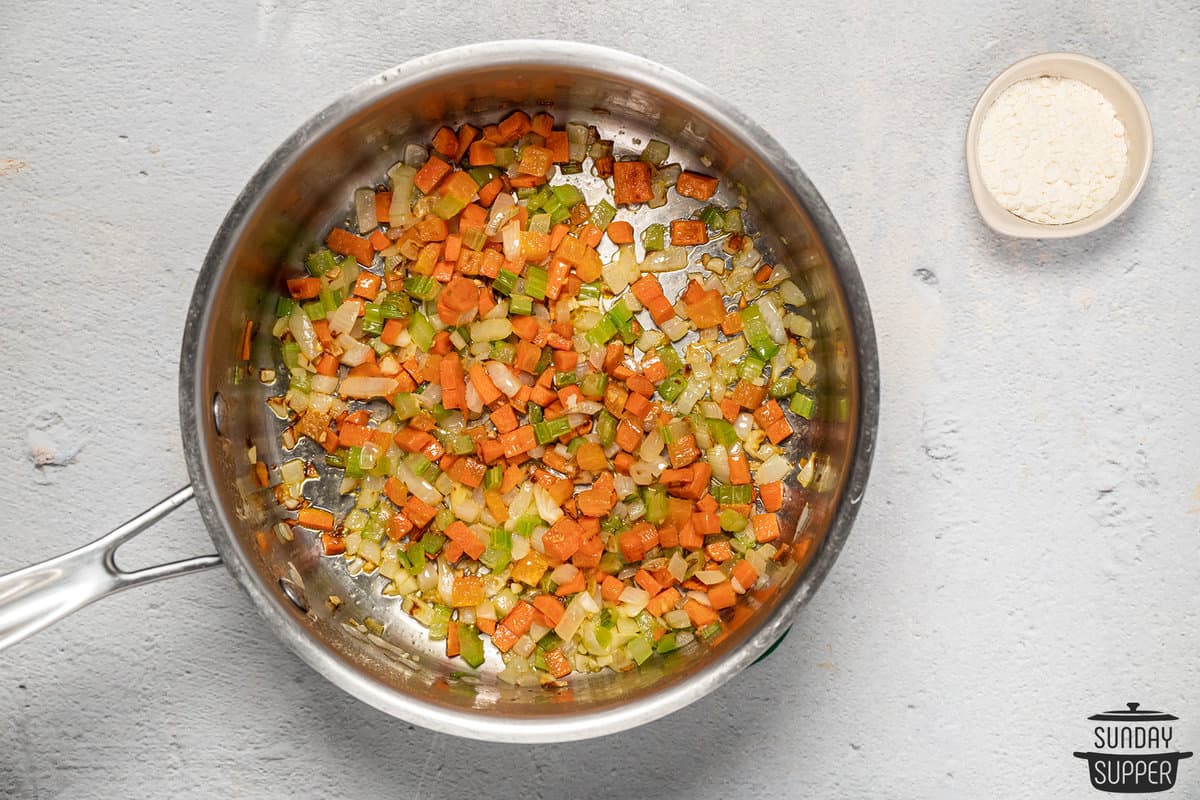
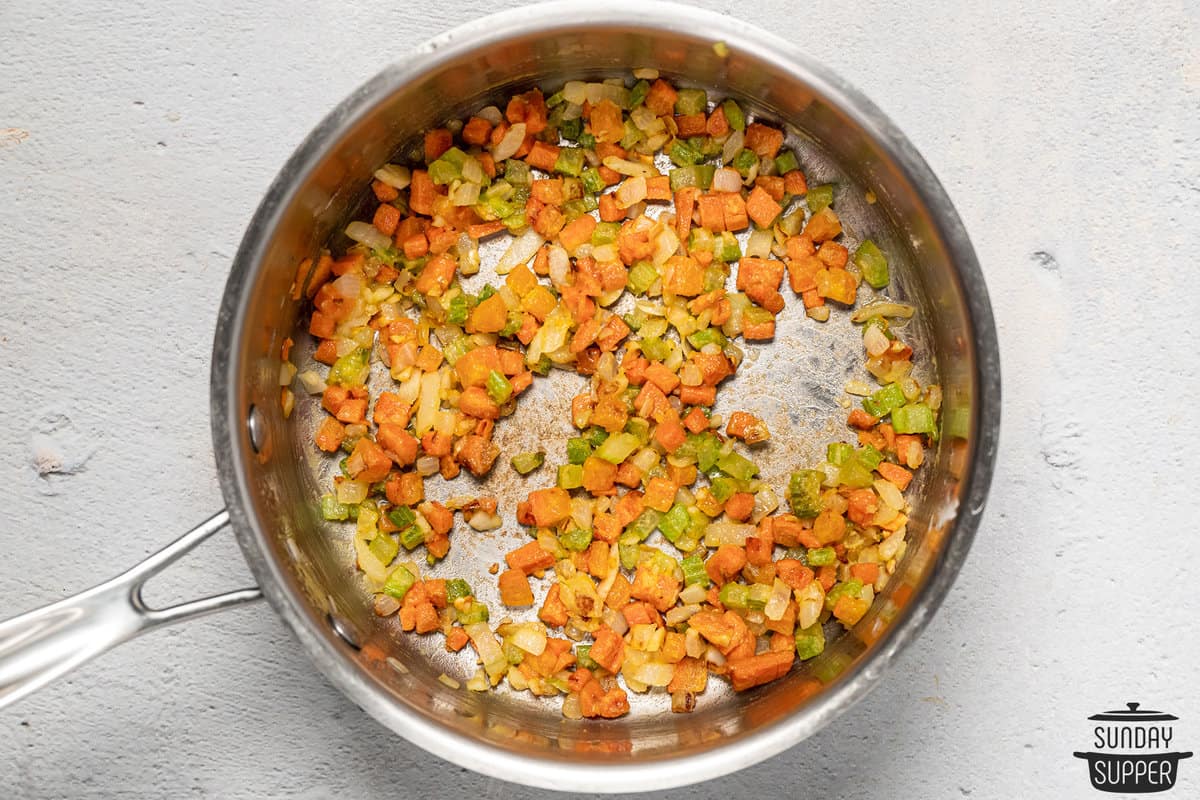
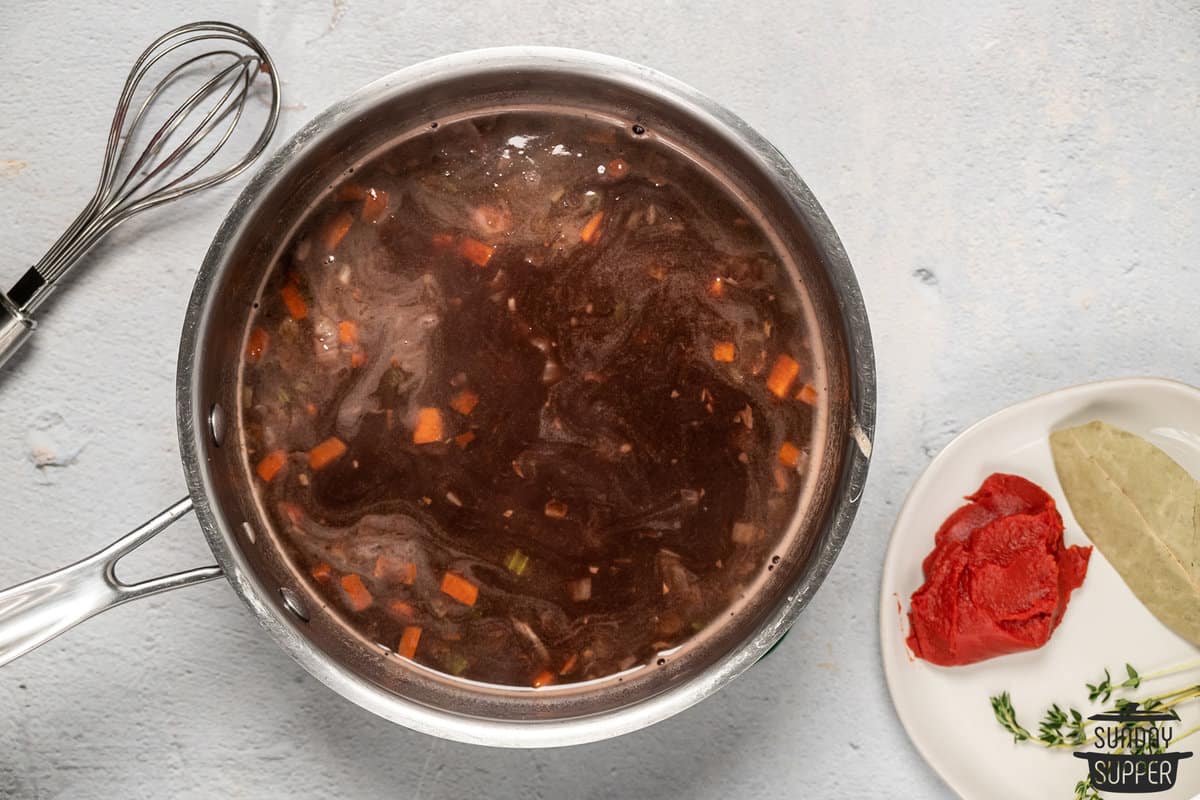
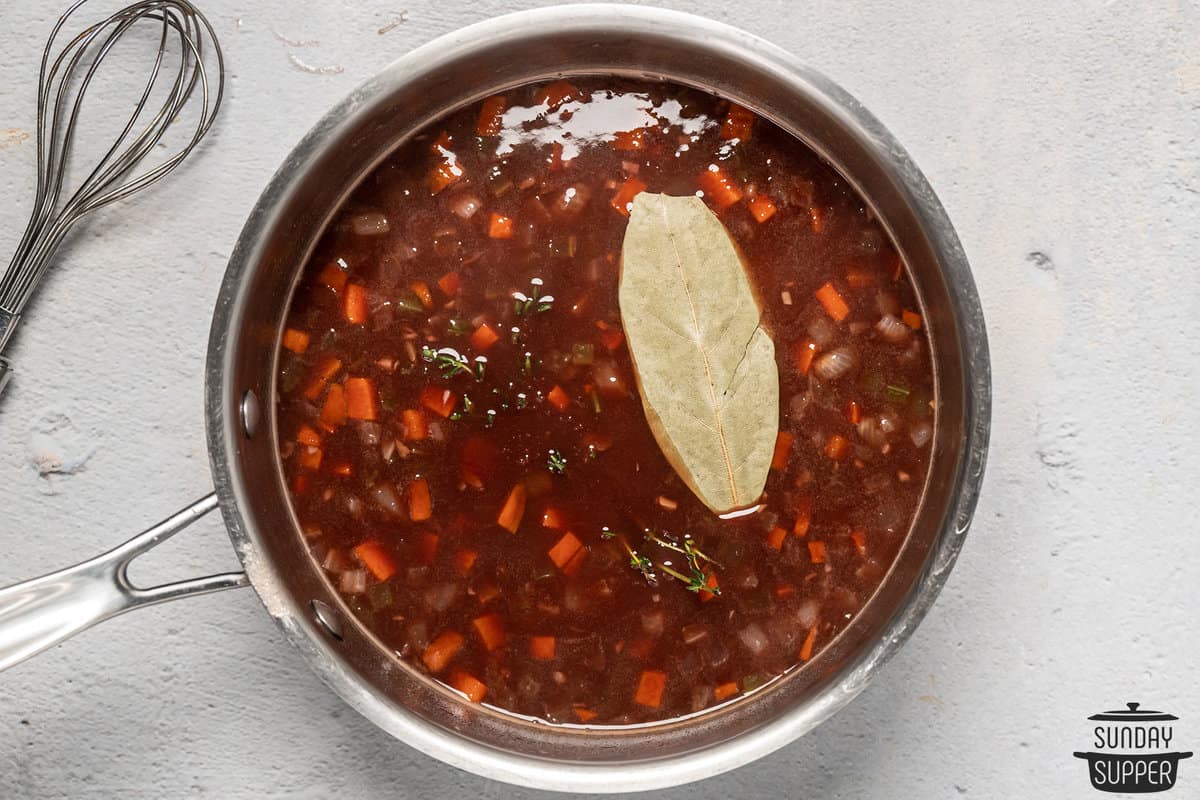
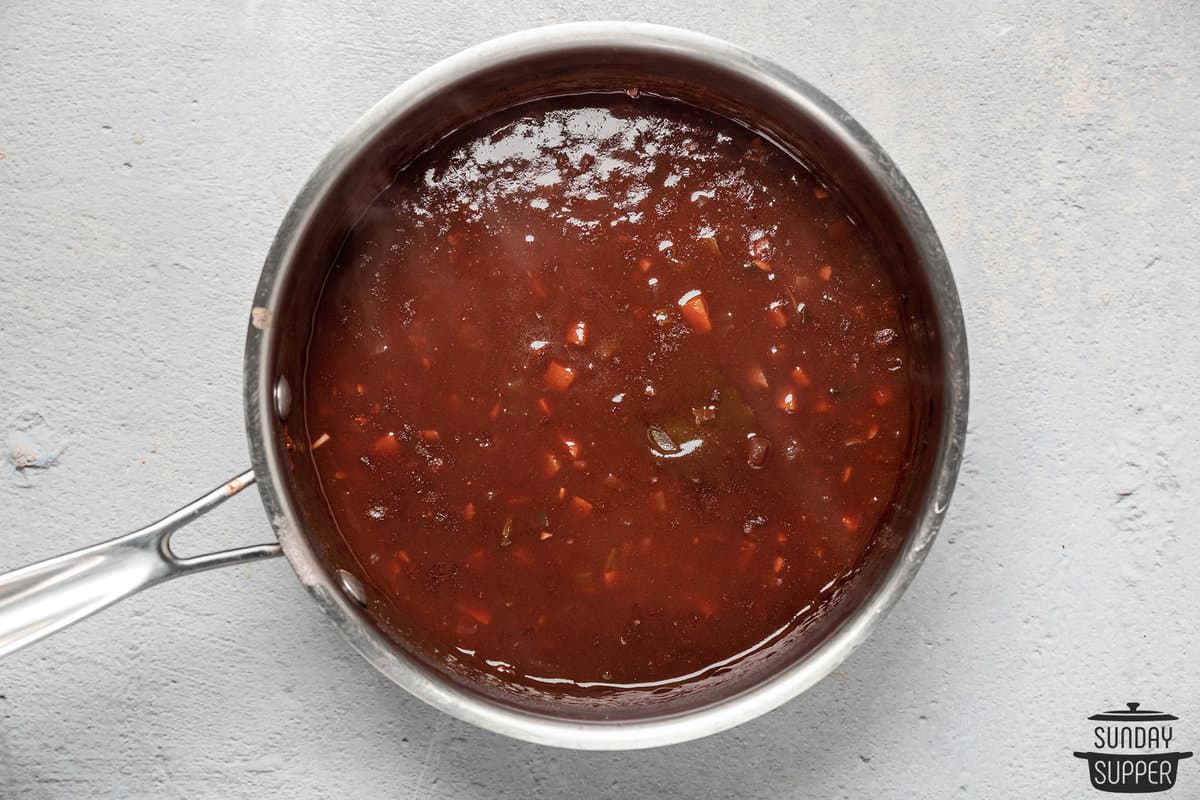
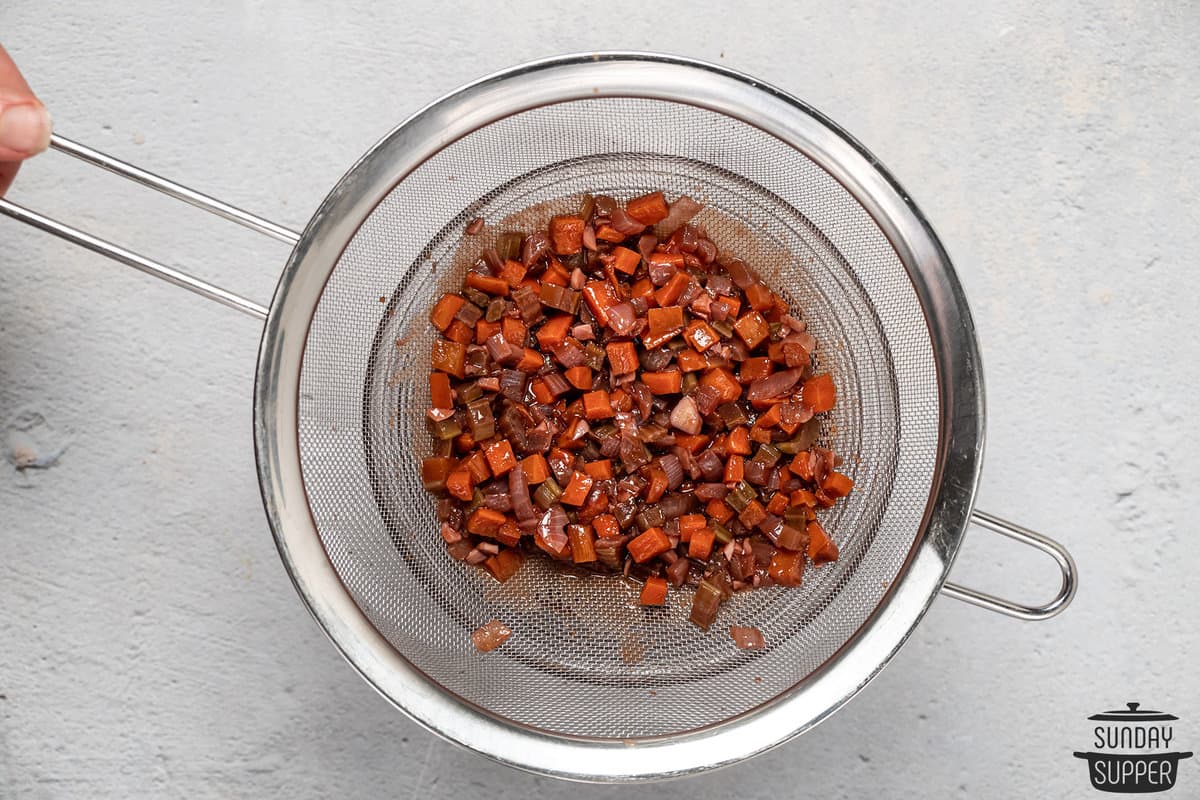
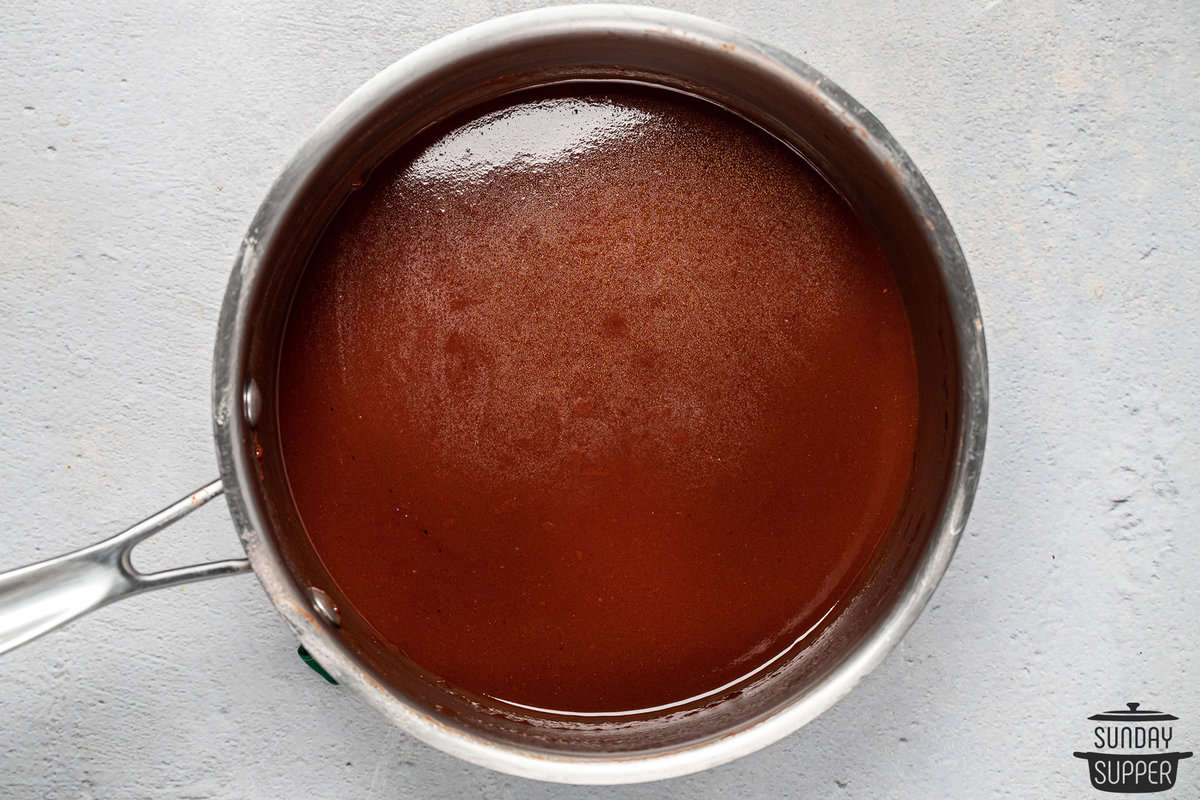
Theresa says
What kind of red wine do you use. I'm would not know what kind to use.
Isabel Laessig says
Hi Theresa! I would personally choose a dry red wine, but any red wine will do. I usually like to pick whatever is marked down at the time. Just make sure it's a drinking wine and not a cooking wine. It will taste better that way. Enjoy!